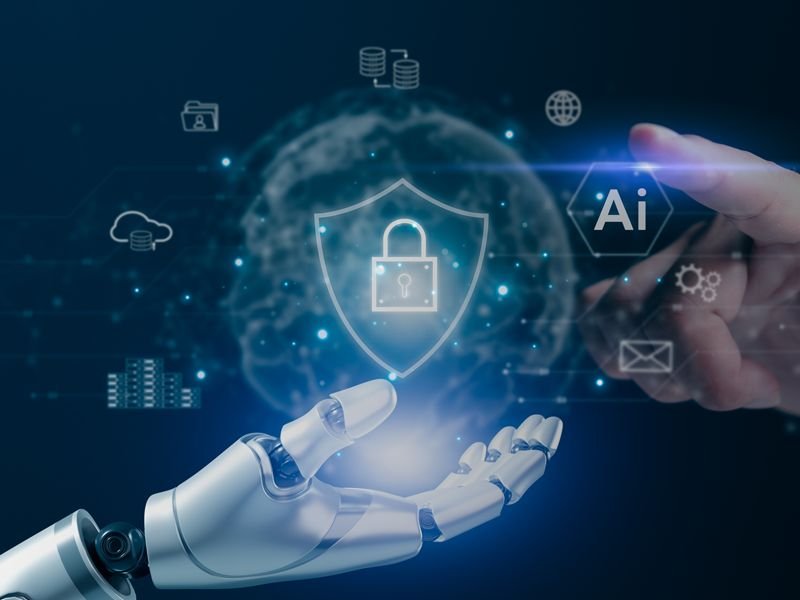The cybersecurity landscape has undergone profound transformation in recent years, driven by increasingly sophisticated threat vectors, expanding digital attack surfaces, and the accelerated adoption of digital technologies across all business sectors. Modern enterprises face unprecedented security challenges that require advanced technological solutions capable of adapting to evolving threats while maintaining operational efficiency and business continuity. This comprehensive examination explores how artificial intelligence technologies are revolutionizing enterprise security approaches, providing organizations with enhanced capabilities for threat detection, response automation, and comprehensive data protection strategies.
Understanding Modern Cybersecurity Challenges
Contemporary cybersecurity threats have evolved far beyond traditional malware and simple attack vectors, encompassing sophisticated nation-state actors, advanced persistent threats, and complex multi-stage attacks that exploit vulnerabilities across hybrid cloud environments, remote work infrastructures, and interconnected business systems. The increasing complexity of modern IT environments demands equally sophisticated security solutions that can adapt, learn, and respond to emerging threats in real-time.
Current cybersecurity challenges facing enterprises include:
• Advanced persistent threats utilizing sophisticated evasion techniques and prolonged infiltration strategies • Zero-day exploits targeting previously unknown vulnerabilities in software and systems • Supply chain attacks compromising trusted vendors and third-party components • Social engineering campaigns exploiting human psychology and organizational trust relationships • Ransomware evolution incorporating advanced encryption and extortion methodologies
Cybersecurity solutions must address these multifaceted challenges through integrated approaches that combine technological innovation with comprehensive risk management strategies and organizational security awareness programs.
AI in Cybersecurity: Transforming Threat Detection and Response
AI in cybersecurity represents a paradigm shift from reactive security measures to proactive, intelligent defense systems capable of identifying, analyzing, and responding to threats with unprecedented speed and accuracy. Artificial intelligence technologies enable security systems to process vast amounts of data, recognize complex patterns, and make intelligent decisions that enhance overall security posture while reducing response times and operational overhead.
Key applications of artificial intelligence in cybersecurity include:
Behavioral Analysis and Anomaly Detection: Machine learning algorithms analyze user behavior patterns, network traffic, and system activities to identify deviations that may indicate security breaches or malicious activities.
Automated Threat Response: Artificial intelligence security systems can automatically isolate compromised systems, block malicious traffic, and initiate remediation procedures without human intervention, significantly reducing response times.
Predictive Threat Intelligence: AI systems analyze global threat data, vulnerability information, and attack patterns to predict potential threats and proactively strengthen defenses before attacks occur.
Security Operations Optimization: Intelligent automation reduces false positives, prioritizes genuine threats, and streamlines security analyst workflows to improve efficiency and effectiveness of security operations.
Sangfor has pioneered the integration of advanced AI technologies into comprehensive cybersecurity platforms that deliver enhanced protection capabilities while simplifying security management for enterprise environments.
AI Cybersecurity: Advanced Protection Mechanisms
AI cybersecurity solutions leverage multiple artificial intelligence techniques including machine learning, deep learning, natural language processing, and computer vision to create comprehensive protection ecosystems that adapt to emerging threats and organizational requirements. These systems continuously learn from new data, refine detection algorithms, and improve response capabilities through ongoing operational experience.
Advanced AI cybersecurity capabilities encompass:
Real-Time Threat Detection: • Continuous monitoring of network traffic, endpoint activities, and cloud resources • Pattern recognition algorithms identifying suspicious behaviors and potential attack indicators • Threat detection systems that analyze multiple data sources simultaneously for comprehensive visibility • Automated correlation of security events across distributed infrastructure components
Intelligent Incident Response: • Automated investigation and forensic analysis of security incidents • Dynamic response escalation based on threat severity and potential impact assessment • Integration with existing security tools and incident management workflows • Comprehensive reporting and documentation supporting compliance and audit requirements
Adaptive Defense Mechanisms: • Self-learning security policies that evolve based on organizational behavior and threat landscape changes • Dynamic risk assessment and automatic adjustment of security controls • Continuous vulnerability assessment and automated patch management coordination • Network security optimization through intelligent traffic analysis and access control
Data Loss Prevention (DLP): Comprehensive Information Protection
Data Loss Prevention (DLP) solutions have evolved significantly through artificial intelligence integration, providing organizations with sophisticated capabilities for identifying, classifying, and protecting sensitive information across all business environments. Modern DLP systems utilize AI technologies to understand data context, recognize sensitive information patterns, and enforce protection policies that adapt to changing business requirements and regulatory obligations.
Contemporary DLP capabilities include:
Intelligent Data Classification: Advanced algorithms automatically identify and classify sensitive data including personally identifiable information, financial records, intellectual property, and regulatory-protected information across structured and unstructured data sources.
Context-Aware Protection:Data protection systems analyze data usage context, user intentions, and business processes to apply appropriate protection measures without impeding legitimate business activities.
Multi-Channel Monitoring: Comprehensive monitoring across email systems, web applications, cloud storage, mobile devices, and endpoint systems ensuring complete visibility and control over data movement and access.
Automated Policy Enforcement: Intelligent policy engines automatically apply protection measures including encryption, access restrictions, and transmission blocking based on data classification and organizational security policies.
Regulatory Compliance Support: Automated compliance monitoring and reporting capabilities supporting adherence to data protection regulations including GDPR, HIPAA, and local privacy requirements.
Sangfor’s DLP solutions demonstrate how artificial intelligence can enhance data protection effectiveness while simplifying policy management and compliance monitoring for complex enterprise environments.
Information Security: Holistic Protection Strategies
Information security in the modern enterprise requires comprehensive approaches that integrate multiple protection technologies, management processes, and organizational capabilities to create resilient defense ecosystems. AI-enhanced security platforms provide the intelligence and automation necessary to coordinate these diverse elements into unified security strategies that adapt to evolving threats and business requirements.
Comprehensive information security frameworks typically encompass:
Identity and Access Management: • Multi-factor authentication systems with behavioral biometrics and risk-based access controls • Privileged access management with continuous monitoring and automated deprovisioning • Zero-trust architecture implementation ensuring continuous verification and least-privilege access • Identity governance supporting role-based access controls and compliance requirements
Infrastructure Protection: • Network segmentation and micro-segmentation limiting lateral movement opportunities • Endpoint detection and response systems providing comprehensive device visibility and control • Cloud security solutions protecting hybrid and multi-cloud environments • Network security technologies including next-generation firewalls and intrusion prevention systems
Security Operations and Management: • Security information and event management platforms aggregating and analyzing security data • Incident response procedures coordinating investigation, containment, and recovery activities • Threat intelligence integration providing context and attribution for security events • Continuous security assessment and improvement programs
Digital Transformation and Remote Work Security
The acceleration of digital transformation initiatives and remote work adoption has fundamentally altered enterprise security requirements, creating new challenges and opportunities for AI-enhanced cybersecurity solutions. Organizations must protect distributed workforces, cloud-based applications, and hybrid infrastructure environments while maintaining user experience and operational efficiency.
Key considerations for modern enterprise security include:
• Cloud security architecture protecting multi-cloud and hybrid environments • Remote work security solutions enabling secure access from diverse locations and devices • Application security measures protecting web-based and mobile applications • IoT device security managing risks from connected devices and sensors • Third-party risk management assessing and monitoring vendor and supplier security postures
Implementation Strategies and Best Practices
Successful implementation of AI-enhanced cybersecurity solutions requires careful planning, stakeholder engagement, and phased deployment approaches that minimize disruption while maximizing security improvements. Organizations must consider technical requirements, operational impacts, and change management needs when adopting advanced security technologies.
Best practices for AI cybersecurity implementation include:
• Comprehensive assessment of current security posture and capability gaps • Stakeholder alignment ensuring executive support and cross-functional collaboration • Pilot program development testing solutions in controlled environments before full deployment • Staff training and development building internal capabilities for managing AI-enhanced security systems • Continuous optimization based on operational experience and evolving threat landscapes
Future Trends and Developments
The cybersecurity industry continues evolving through technological advancement, threat sophistication, and regulatory development that influence solution design and implementation approaches. Understanding future trends helps organizations make informed decisions about security investments and strategic planning initiatives.
Emerging trends in AI cybersecurity include:
• Quantum-resistant cryptography preparing for post-quantum computing threats • Extended detection and response platforms providing comprehensive visibility across all security domains • Security automation and orchestration streamlining incident response and compliance management • Privacy-preserving AI enabling security analysis while protecting sensitive information • Collaborative threat intelligence sharing security insights while maintaining competitive advantages
Conclusion: Securing the Digital Future
The integration of ai in cybersecurity and ai cybersecurity technologies represents a fundamental evolution in enterprise security approaches, providing organizations with unprecedented capabilities for threat detection, response automation, and comprehensive protection strategies. Combined with advanced Data Loss Prevention (DLP) solutions, these technologies create robust defense ecosystems that adapt to evolving threats while supporting business objectives and regulatory requirements.
Success in modern cybersecurity requires comprehensive understanding of threat landscapes, technology capabilities, and organizational requirements that guide strategic decision-making and implementation planning. Organizations that invest in AI-enhanced security solutions position themselves to address current challenges while building resilience for future threats and opportunities.
Sangfor exemplifies the innovation and expertise necessary for delivering comprehensive cybersecurity solutions that combine advanced artificial intelligence with practical implementation support, helping organizations achieve optimal security outcomes while maintaining operational efficiency and business continuity.
For comprehensive AI-enhanced cybersecurity solutions designed for modern enterprise challenges, explore advanced protection technologies and expert consultation services at https://www.sangfor.com/th
Contact US
Address: 141 floor 11 Major Tower Thonglor Soi Thonglor 10, Khlong Tan Nuea Subdistrict, Watthana, Bangkok 10110
Phone: +662 002 0118
Email: marketing@sangfor.com
Website: https://www.sangfor.com/th





